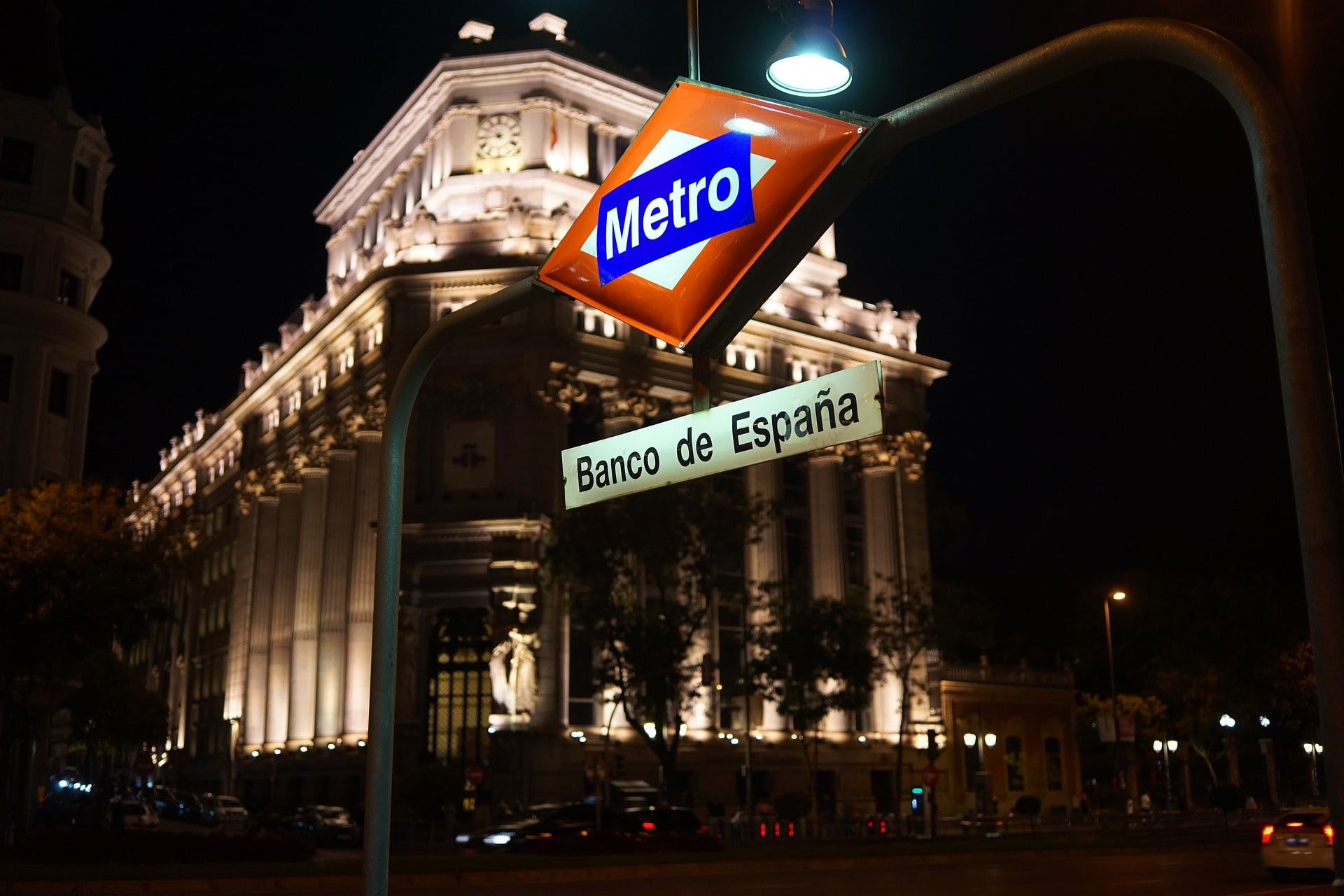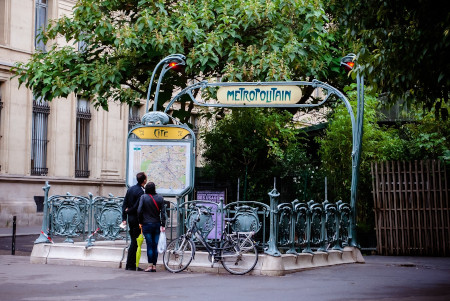
A World Tour of Best Practices for a Subway Truly Accessible to All | Summary of a French Study
Providing a safe and accessible service for all passengers is a major issue for all transit agencies throughout the world. That’s why, when we discovered the brilliant study by the French department’s accessibility branch on subway accessibility in the key cities around the world, it seemed essential to us to share it with you!
It is estimated that 30 to 40% of the population experience difficulties in using public transport. This means that accessibility is not restricted to people with disabilities, and even less to wheelchair users alone, contrary to what The Guardian suggested in its 2017 ranking of the most accessible subway networks. Since then, the French department’s accessibility branch published a study* which examines the accessibility of 42 subway located in 25 countries. This nuanced report discusses the concept of “accessible subway” and highlights the positive initiatives put in place to facilitate access to the subway for all those who encounter mobility limitations. We have produced a summary for you, supplemented with examples from our experience, because yes, we know subway accessibility like the back of our hands!
30 to 40% of the population facing barriers in accessing the subway
Taking the subway is more complex than it looks. This implies a chain of actions for which many travelers may encounter brakes or obstacles:
⊗ Preparing your route,
⊗ Obtaining real-time information about the correct functioning of accessibility equipment and any disturbances on the network,
⊗ Locating access to the subway station,
⊗ Going down into the station,
⊗ Obtaining a transport ticket,
⊗ Requesting information or communicating with staff,
⊗ Going through security gates,
⊗ Walking and finding your way inside the station to reach the right platform,
⊗ Waiting in safety until the arrival of the train,
⊗ Getting on board,
⊗ Finding a seat or support bar to maintain balance throughout the trip,
⊗ Getting off at the right station,
⊗ Walking and finding your way inside the station to reach your connection or the desired exit,
⊗ Going through the exit gates and
⊗ Going up towards the road.
Beyond people living with a physical, sensory, mental or psychological disability, many travelers encounter difficulties for one or more stages of the travel chain. According to various studies, they represent 30 to 40% of public transport users. These are the elderly, people with a temporary disability due to injury or illness, pregnant women, obese people, people of small stature, people who are illiterate or do not master the English language, people with young children or even those burdened with packages or luggage.
For more details on the difficulties encountered by subway users according to their disability and the solutions provided by the transit operators, we invite you to read our article:
How to Help People with Disabilities Get a Better Experience on the Subway?
An accessible subway, what is it?
The British daily The Guardian published in 2017 the ranking of 7 major subway systems in the world according to their accessibility level. Paris took last place behind Washington DC, Los Angeles, Tokyo, New York City, Barcelona and London. A very severe score for the French capital, which, despite the impossibility of making most of its metro stations accessible to wheelchair users, is doing its best to take into account the other disabilities on the Parisian metro system.
It is from this observation that the French department’s accessibility branch launched a study on the accessibility of 42 subway systems around the world. The data collected is uneven and does not allow for a ranking, which would be senseless. But this study questions the notion of “accessible subway system”.
1st lesson: physical accessibility for people in wheelchairs remains the top achievement for a subway system to claim to be “accessible”. This includes installing elevators, ramps, lowering floors, and reducing or eliminating gaps between trains and platforms. Then come the visual and audio information systems inside the trains which benefit everyone but even more so to people with visual or hearing disabilities. But overall accessibility to all disabilities requires attention to every detail throughout the travel chain. Thus, poorly thought out new equipment risks ruining all the efforts made upstream.
2nd lesson: other measures exist but they are far from being generalized and little valued on the various communication media of subway systems. Improving visual signage, installing audio beacons, induction loops, accessible vending machines and entry gates, training staff and developing wayfinding applications adapted to different disabilities are just as important for successful accessibility.
Inaccessibility is not inevitable
The age of infrastructure is often mentioned to explain its inaccessibility. But the oldest subway systems are not equal in terms of accessibility. It appears that Paris comes bottom of the class with only 9 wheelchair accessible stations out of 303. Older subway systems do much better: London (1863), Boston (1897) or even Athens (1869). Other subway systems inaugurated before 1930 also perform well in terms of accessibility: Berlin (1902), Madrid (1919), Barcelona (1924) and Tokyo (1927).
Although New York City subway system shows much better performance than the Paris metro, it remains among the lowest percentages of any major transit system in the world. Only 119 of 472 (25%) of all of the subway system’s stations are fully accessible to wheelchair users. In comparison, Boston’s MBTA subway and the Chicago “L”, which are as old or older, have more accessible subway stations. However, 70 more New York City subway stations should be accessible by 2024. This would allow one of every two to four stations on every line to be accessible, so that all non-accessible stops would be a maximum of two stops from an accessible station.
Most of the stations were built before wheelchair access was a requirement under the Americans with Disabilities Act (ADA) of 1990. Since then, elevators have been constructed in new stations and stations that required little modification to meet ADA standards have been upgraded. In addition, the Metropolitan Transportation Authority (MTA) selected 100 “key stations” to be conformed to ADA requirements when they are being renovated.
According to the MTA’s definition, a fully accessible station must have the following facilities:
⊗ Elevators or ramps,
⊗ Handrails on ramps and stairs,
⊗ Large-print and tactile-braille signs,
⊗ Audio and visual information systems,
⊗ Accessible station booth windows,
⊗ Accessible MetroCard Vending Machines,
⊗ Accessible service entry gates,
⊗ Platform-edge warning strips,
⊗ Platform gap modifications or bridge plates to reduce or eliminate the gap between trains and platforms,
⊗ Telephones at an accessible height with volume control,
⊗ Accessible restrooms at stations with restrooms.
The MTA also provides training to its employees to better assist riders with disabilities. On the other hand, training is delivered to riders with disabilities themselves, their families, and mobility specialists.
Original initiatives to include all disabilities for a better subway accessibility
With a few exceptions such as Marseille, Rome or Beijing, subways built after 1970 are generally wheelchair accessible. In most stations, there are elevators, access ramps, widened doors and seats reserved for people with reduced mobility. Obstacles persist to board the trains. Human assistance may be necessary.
Other initiatives are emerging to facilitate travel, orientation and communication for other travelers with disabilities, whether visual, hearing, intellectual, psychological or cognitive. Far from being still generalized, they are nevertheless very interesting sources of inspiration for transit operators.
Adapted materials to plan a route according to one’s disability
Even more than for the general population, planning their itinerary is a crucial step for people with disabilities. Identifying their route and any difficulties, knowing the operating status of access facilities, all this requires appropriate tools. The first step is of course to make all digital media accessible, websites and mobile applications.
Digital Accessibility: Why? For Whom? How?
But paper based materials are not to be neglected. Thus, the London tube provides a collection of maps adapted to different disability situations: large print, tactile, audio, step-free maps and even tunnel maps for claustrophobic people.
In Paris and Toulouse, educational materials have been developed in the form of card games and other fun devices for people with intellectual disabilities to familiarize themselves with the network.
Public Transport: Accessibility Solutions, Also for the Intellectual Disability
Audio beacons to locate entrances
Audio beacons allow blind or visually impaired people to locate entrances to subway stations thanks to the source of the sound. They are triggered a few meters away using a remote control or a smartphone application. The elevators of the Rennes metro in France have been equipped with audio beacons since it was built in 2002. Today, audio beacons can be found in Paris, Lyon, Prague, Helsinki and perhaps other cities as well.
Tactile guide paths to mark the routes
Guidance or directional tactile paving allows visually impaired people and anyone with orientation difficulties to get from one point to another without deviating. They are found on many subway systems such as Brussels, Berlin, Madrid, Barcelona, Santiago de Chile or Tokyo. To provide effective guidance, these should preferably be coupled with audio signage or a smartphone wayfinding application.
Indoor guidance applications for smartphones
Despite the lack of a GPS signal inside subway stations, wayfinding applications adapted to different disabilities are gradually spreading. They make it possible to calculate a route in a closed area adapted to the various mobility limitations of the users. The Evelity solution is already installed in the Marseille metro.
The Smartphone: a Revolution for the Blind and Visually Impaired!
Vending machines adapted to all disabilities
Lowering vending machines so that they can be used by people in wheelchairs or short stature has become the rule on many subway networks. However, these machines often remain inaccessible to blind or visually impaired people, to people who are illiterate or do not speak the language of the country, or even to those with an intellectual disability. Thus, interfaces should be designed with all of these restrictions in mind. Text to speech is an option to be implemented, as in Paris or Barcelona.
Pictures, symbols and pictograms
In order to help people who are illiterate or have an intellectual disability to find their way around, some operators have designed signage which associates a distinct image with each station name.
This work has already been carried out on the subway networks in Mexico City, Fukuoka in Japan, Recife in Brazil, and Toulouse in France.
Braille signs
International standards for elevators require button marking in Braille and prismatic-numbers, which is very useful for visually impaired people to select their floor. The information in Braille sometimes available on the platforms, as in Washington DC, Chicago or Santiago de Chile, would on the other hand have every interest in being replaced by audio information, much more universal. Indeed, Braille has three major drawbacks:
1. It is difficult to locate for a person who cannot see or has low vision;
2. Serious problems with cleanliness, when touching it, can risk spreading bacteria or viruses such as COVID-19;
3. The proportion of people able to read Braille remains very low.
Audio information addresses all people with visual impairments, but also intellectual or understanding difficulties.
Tactile maps
Tactile maps for the visually impaired can be found on some subway networks such as Paris, Brussels, New York City and Tokyo. For the same reasons as Braille information, these are not very appropriate. On the other hand, tactile maps on paper can be made available to users so that they can consult them in the comfort of their home or the premises of an association. These will allow them to better understand their environment and therefore to find their way more easily.
Staff training to provide adequate assistance
Despite the accessibility improvements, certain situations continue to require human assistance, for example in case of equipment failure or network disruption. This assistance is widely present in London, Paris, Brussels, New York City, or Saint Petersburg. And in order to be able to provide effective assistance, the staff concerned are specifically trained to support people with disabilities.
The French study from the department’s accessibility branch on subway ACCESSIBILITY IN MAJOR WORLDWIDE cities shows us that accessibility has generally improved a lot for people in wheelchairs but is still struggling to become widespread for other disabilities. In addition, access to information on available facilities and suitable route planners is sorely lacking. Hence the interest in surfing open data to develop digital solutions that meet everyone’s specific needs!
media

The British daily The Guardian published in 2017 the ranking of 7 major subway systems in the world according to their accessibility level. Paris took last place behind Washington DC, Los Angeles, Tokyo, New York City, Barcelona and London.
writer

Lise Wagner
Accessibility Expert
stay updated
Get the latest news about accessibility and the Smart City.
other articles for you

Open Data Is Key to Fostering Universal Accessibility
Open data represents an opportunity for cities to reach universal accessibility. It shows the missing links of the mobility chain.
Our Audio Beacons Guide the Blind and Visually Impaired at the Helsinki Subway
The Helsinky subway improved their audio signage system by installing on demand and remotely activated audio beacons.
7 Good Reasons to Install Audio Beacons at Your Public Transport Network
Audio beacons are an efficient way to provide more autonomy to blind and visually impaired people. They can easily use public transport.

Will Remote Activation Become the Norm for Accessible Pedestrian Signals?
More and more cities like New York have been exploring remote activation to trigger accessible pedestrian signals.
share our article!
more articles

Disability Statistics in the US: Looking Beyond Figures for an Accessible and Inclusive Society
Disability Statistics in the US: Looking Beyond Figures for an Accessible and Inclusive Society Around 61 million adults in the United States live with a disability. Diving into disability statistics in the US will help us know exactly who is concerned and what...
Our Audio Beacons Guide the Blind and Visually Impaired at the Helsinki Subway
Our Audio Beacons Guide the Blind and Visually Impaired at the Helsinki SubwayOur audio beacons equip the new line of the Helsinki subway in Finland. They help blind and visually impaired people locate the points of interest of a station. For users with visual...

Will Remote Activation Become the Norm for Accessible Pedestrian Signals?
Will Remote Activation Become the Norm for Accessible Pedestrian Signals?Without pushbutton, there are no accessible pedestrian signals. That’s how APS work in the U.S. But more and more cities have been exploring remote activation like New York City. The Department...

Hearing Impaired People: a Multitude of Profiles for Different Needs
Hearing Impaired People: a Multitude of Profiles for Different Needs Did you know that hearing impaired people have several profiles and that the way they identify themselves is important? You may be familiar with deaf and hard of hearing people but for each of...
NEVER miss the latest news about the Smart City.
Sign up now for our newsletter.
Unsubscribe in one click. The information collected is confidential and kept safe.
powered by okeenea
The French leading company
on the accessibility market.
For more than 25 years, we have been developing architectural access solutions for buildings and streets. Everyday, we rethink today’s cities to transform them in smart cities accessible to everyone.
By creating solutions ever more tailored to the needs of people with disabilities, we push the limits, constantly improve the urban life and make the cities more enjoyable for the growing majority.


